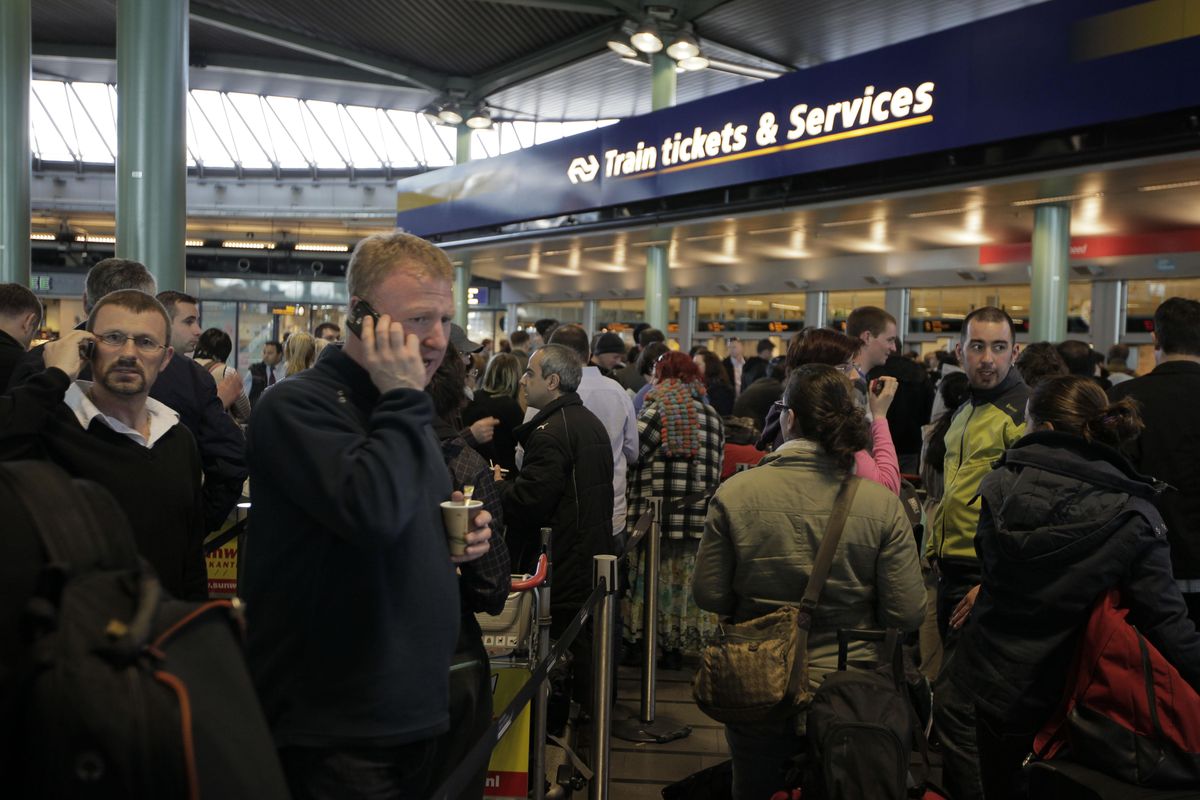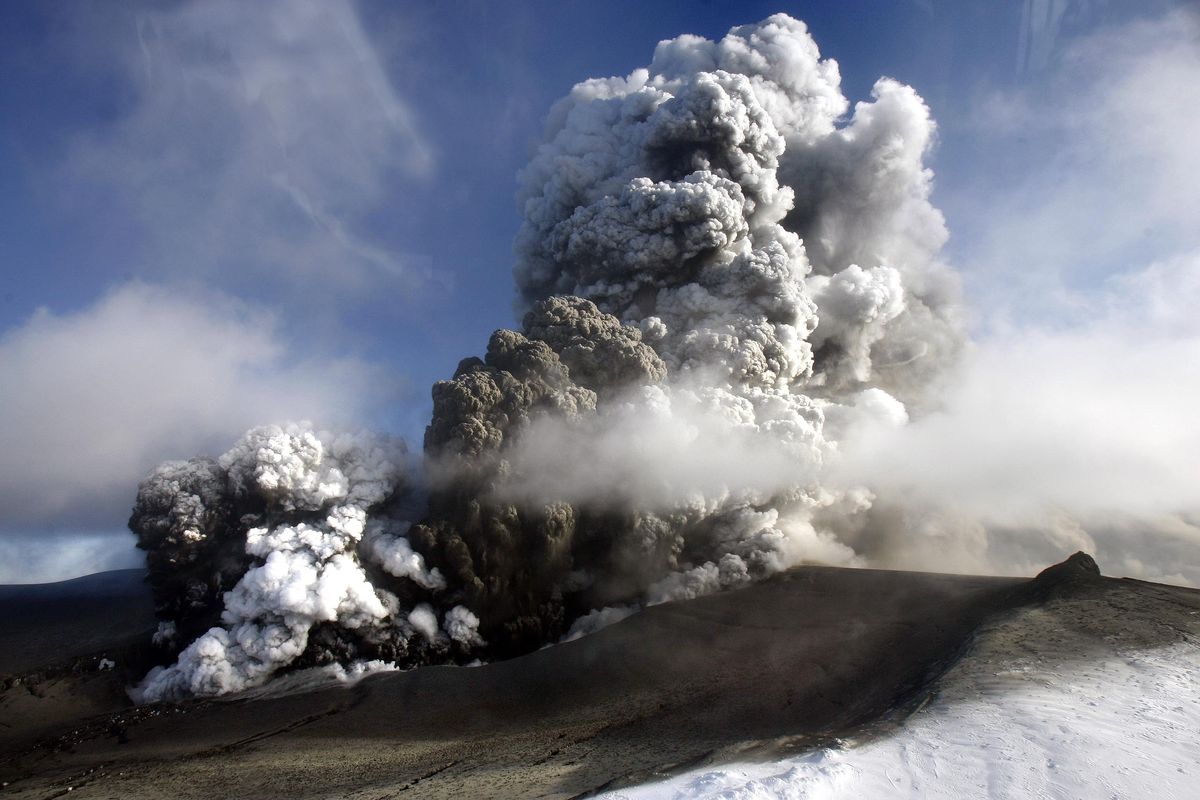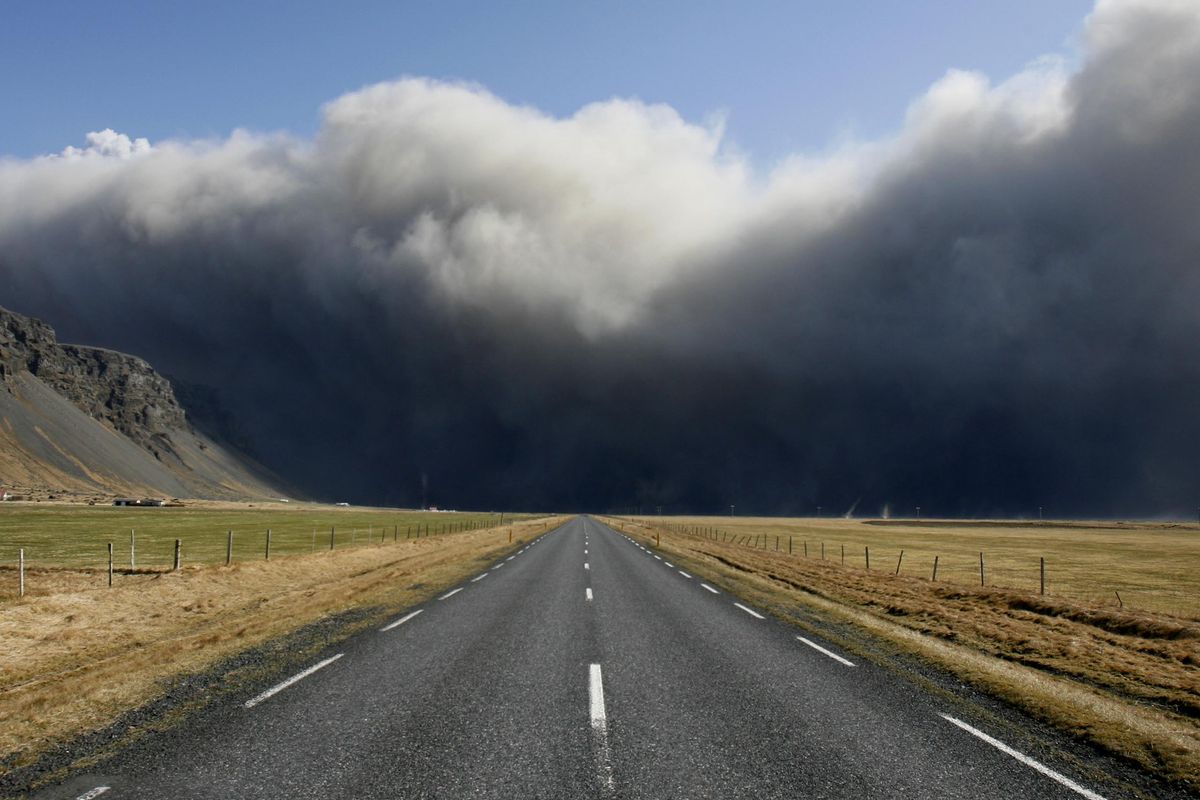Volcano’s pall lingering
Ash cloud extends to southern Europe
The volcano in southern Iceland's Eyjafjallajokull glacier sends ash into the air Saturday, April 17, 2010. The Icelandic volcano that has kept much of Europe land-bound is far from finished spitting out its grit, and offered up new mini-eruptions Saturday that raise concerns about longer-term damage to world air travel and trade. (Brynjar Gauti / Associated Press)
LONDON – The miasma of volcanic ash hovering over Europe showed no sign of dissipating Saturday, keeping thousands of forlorn travelers stranded across the continent for a third day and worsening economic losses.
The cloud of grit from the still-erupting Eyjafjallajokull volcano in Iceland began creeping as far south as Italy, forcing authorities to shut down airports in the northern part of the country.
The airline industry alone stands to lose more than $200 million a day, according to the International Air Transport Association. The Europe-wide aviation agency Eurocontrol said it expected only 5,000 flights across European airspace Saturday, compared with 22,000 normally.
Travelers anchored to Earth continued their scramble for hotels, or for trains, ferries and even taxis to reach their desired destinations. In Copenhagen, an enterprising cab company posted fares for long hauls across the continent: about $2,000 for passengers going to Amsterdam; $6,000 all the way to Madrid.
Most of British airspace remained closed, with planes grounded until 1 p.m. today at the earliest.
In Germany and northern France, including Paris, authorities canceled all flights until early today. Irish, Belgian, Dutch, Austrian and Swiss airspace was restricted. Most major airports throughout Scandinavia were idled, including Arlanda, Stockholm’s largest, which warned on its website: “The forecast is now even more uncertain than before.”
With the pileup of marooned passengers growing by the hour, and with U.S. airlines canceling more than 80 percent of their flights to Europe on Saturday, analysts say that clearing out the backlog and getting the system back to normal could take days once the ash cloud dissipates.
And no one was predicting when that would happen.
“It’s still erupting,” Armann Hoskuldsson, a scientist at the University of Iceland, said of the volcano. “It’s more or less constant.”










